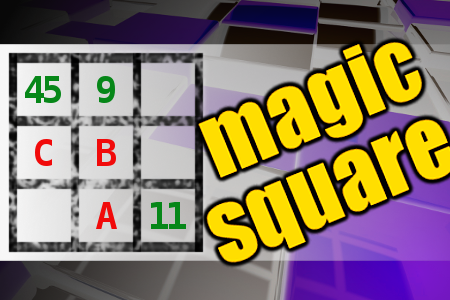MAGIC SQUARE: Calculate A*B-C
The aim is to place the some numbers from the list (9, 11, 16, 29, 31, 36, 43, 45, 50, 59, 97) into the empty squares and squares marked with A, B an C. Sum of each row and column should be equal. All the numbers of the magic square must be different. Find values for A, B, and C. Solution is A*B-C.Correct answers: 27
The first user who solved this task is Nílton Corrêa De Sousa.
#brainteasers #math #magicsquare

Some Last Minute Requests
A man woke up in a hospital bed and called for his doctor. He asked, "Give it to me straight. How long have I got?" The physician replied that he doubted that the man would survive the night.
The man then said, "Call for my lawyer." When the lawyer arrived, the man asked for his physician to stand on one side of the bed, while the lawyer stood on the other. The man then laid back and closed his eyes. When he remained silent for several minutes, the physician asked what he had in mind. The man replied "Jesus died with a thief on either side. I just thought I'd check out the same way."
The man then said, "Call for my lawyer." When the lawyer arrived, the man asked for his physician to stand on one side of the bed, while the lawyer stood on the other. The man then laid back and closed his eyes. When he remained silent for several minutes, the physician asked what he had in mind. The man replied "Jesus died with a thief on either side. I just thought I'd check out the same way."

